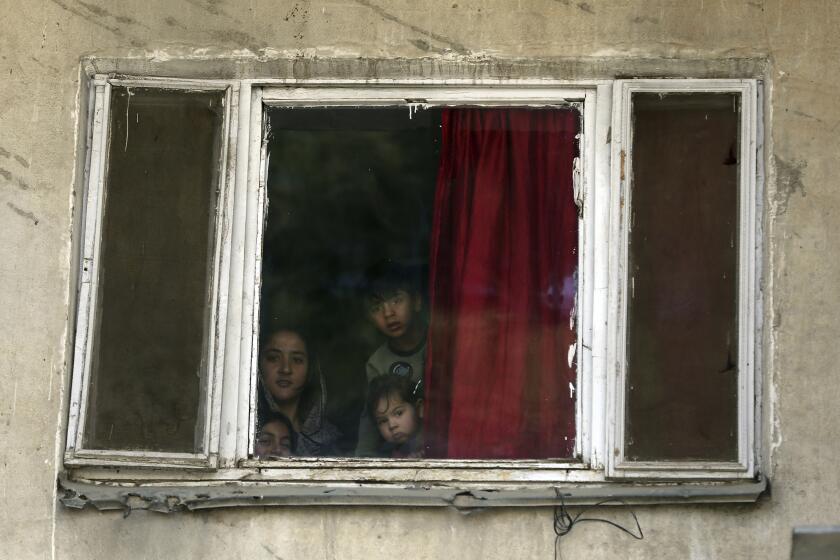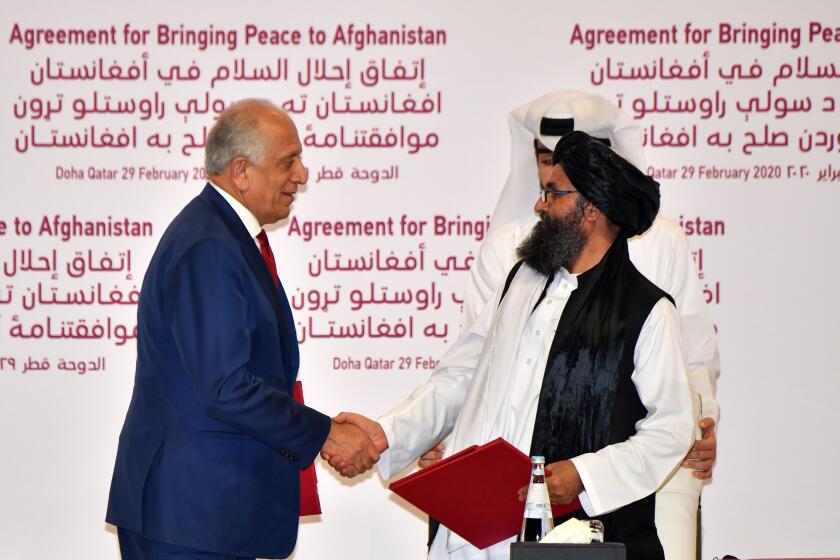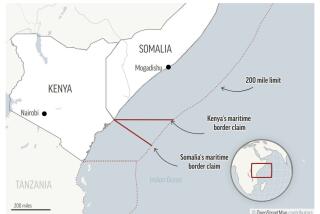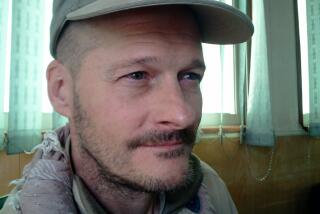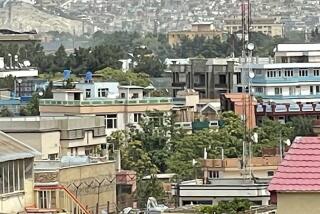Navy SEALs raided Afghan village, detained suspected militants to find kidnapped American
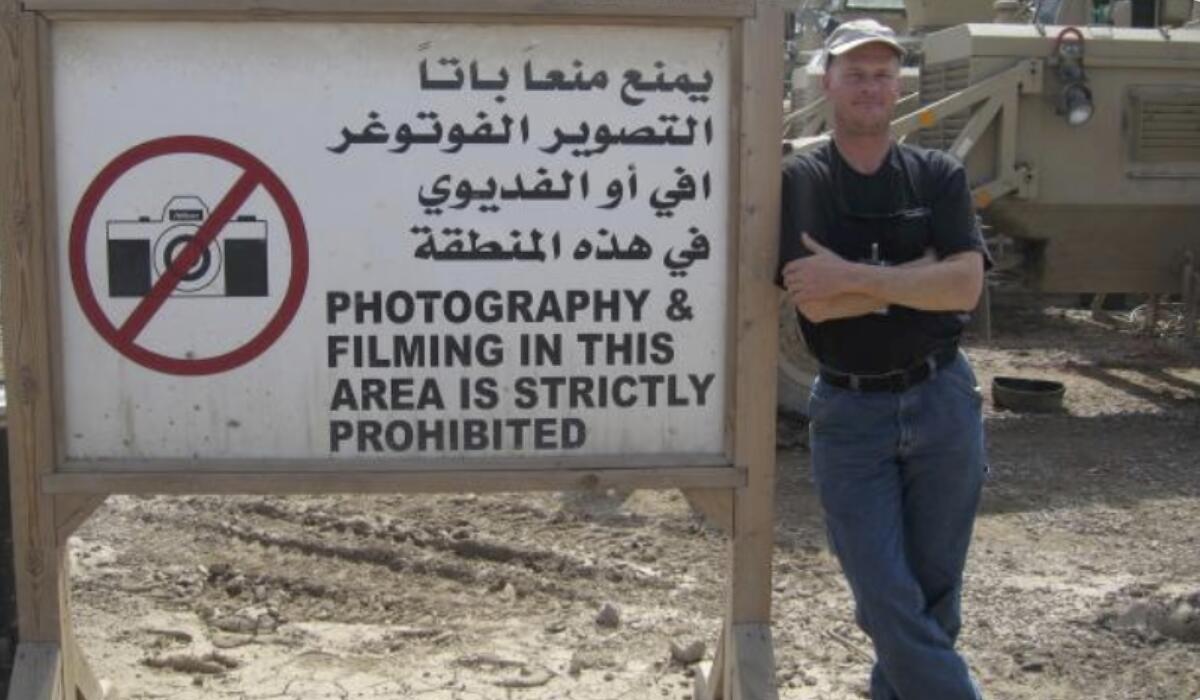
WASHINGTON — In the days after an American contractor was kidnapped in Afghanistan in January, U.S. Navy commandos raided a village and detained suspected members of the Taliban-linked Haqqani network while the U.S. intelligence community tried to track the cellphones of the man and his captors, the Associated Press has learned.
While the circumstances surrounding the abduction of Mark R. Frerichs remain unclear, the previously unreported operation described by multiple U.S. officials over the past month shed new light on early efforts to locate the 57-year-old contractor from Illinois. Frerichs’ disappearance has been shrouded in mystery, and the case has been the subject of minimal public discussion by the U.S. government.
The new details of the operation to find him emerge as violence and political infighting in Kabul threaten to scuttle a peace deal between the U.S. and the Taliban. Last month, Secretary of State Michael R. Pompeo voiced frustration after a failed attempt to mediate a power struggle between Afghan President Ashraf Ghani and his political rival, Dr. Abdullah Abdullah.
Washington has urged Kabul to release Taliban prisoners, which is part of the peace agreement.
But there are no indications that Frerichs, a Navy veteran, has been part of negotiations between the U.S. and Taliban leadership, or that his release is part of any peace deal.
Insurgents attacked security forces in northern Balkh province and abducted the civilians, later killing them, local officials said.
“The Taliban kidnapped my brother in January. In February, the U.S. signed a peace deal with the Taliban. My brother wasn’t part of the deal,” Charlene Cakora, one of Frerichs’ sisters, said in an emailed statement to the AP. “Now we are arranging for the Taliban and Afghan government to exchange thousands of prisoners. Why can’t we make an American hostage be one of them?”
Frerichs’ father, Art, said in a statement that though he has faith in President Trump and Pompeo, “I just need them to tell their people negotiating with the Taliban that America won’t lift a finger until my son comes home. He’s a veteran. This is America. We don’t leave people behind.”
The Pentagon and U.S. Special Operations Command declined to comment. The rescue effort is being coordinated through the FBI-led Hostage Recovery Fusion Cell, which said in a statement that it was working with its partners to ensure “that Mark Frerichs and all Americans held hostage abroad are returned home.” It urged anyone with information to come forward.
The State Department said it was aware of an American who’d been abducted in Afghanistan and that the “welfare, safety and security of Americans is the Trump administration’s highest priority.”
A former U.S. national security official who is advising the Frerichs family said he specifically urged Washington peace envoy Zalmay Khalilzad to resolve the situation and bring Frerichs home. The former national security official insisted on anonymity to speak candidly since the official works with the Trump administration.
U.S. officials believe Frerichs, of Lombard, Ill., was held for at least some time in Khost, an eastern province along the border with Pakistan and its so-called tribal regions, a mountainous area that has historically been a haven for Taliban and Al Qaeda militants.
The process initiated by the U.S., without inclusion of women or the Afghan government, has put progress in Afghanistan at risk.
The former national security official said that Frerichs had been in Afghanistan for about a decade working on commercial projects and was not a U.S. government contractor.
Though no formal demands are known to have been made, U.S. intelligence officials believe Frerichs was captured by members of the Haqqani network, a militant group that is aligned with the Taliban in Afghanistan and that was designated as a foreign terrorist organization in 2012.
Though the Haqqanis are known to carry out assassinations and kidnappings for ransom, the Taliban leadership has not acknowledged Frerichs’ capture.
In November, the Afghan government released three prominent members of the Haqqani network in exchange for an American citizen and an Australian professor abducted in 2016. Pompeo characterized the prisoner swap as a “goodwill gesture.”
U.S. Rep. Michael Waltz, a Florida Republican and Army veteran who led the teams that searched for Bowe Bergdahl after the Army soldier abandoned his post and wound up captured by the Taliban, said the Taliban frequently hides American hostages until they can be moved over the border into Pakistan.
He said he had “real concerns about suggestions that the Taliban are serious about peace.”
The SEALs involved in the Frerichs effort had spent late January working to recover the bodies of two American service members who died when their aircraft crash-landed in Ghazni in central Afghanistan, according to the senior U.S. government official.
Breaking News
Get breaking news, investigations, analysis and more signature journalism from the Los Angeles Times in your inbox.
You may occasionally receive promotional content from the Los Angeles Times.
The bitter winter weather that limited overhead surveillance of the airplane wreckage by U.S. military drones also worked against officials during the later SEAL operation on the night of Feb. 3. Periods of poor-to-nonexistent visibility ultimately delayed a planned intelligence-gathering operation on a known Taliban location, said the senior U.S. government official.
Once the weather cleared, the SEALs loaded onto helicopters and flew to the undisclosed location. The senior official declined to disclose the exact location of the province for operational security reasons.
The senior U.S. government official and the Defense Department source with knowledge of the raid, who also requested anonymity, said the SEAL platoon was not met with Taliban resistance and that once at the compound, they detained several alleged Haqqani militants and uncovered a weapons cache.
The suspected Haqqani members were questioned about Frerichs’ whereabouts and were ultimately turned over to the Afghan government, according to the senior U.S. government official.
On Feb. 4, American intelligence officials received a report that Frerichs had possibly been moved to Quetta, Pakistan, a historical haven for the Taliban, the two officials said. But the information was deemed not credible enough to warrant a special operations mission, according to the senior U.S. government official.
The report also conflicted with signals intelligence — information gathered from electronic signals broadcast from devices like portable radios and cellphones — that U.S. officials had at the time.
U.S. intelligence officials continued to receive location pings from the suspected cellphones of Frerichs and his captors, but the trail went cold on Feb. 5, according to the senior U.S. government and Defense Department officials.
While the senior U.S. government official would not say where exactly the last location ping for Frerichs came from, the official said it was near where he was captured. The AP was not able to determine how the U.S. intelligence community knew to monitor these specific cellphones.
“Operationally, the reason why time is critical in a kidnapping is because you can close the distance quicker, ideally immediately or by utilizing sources,” said the senior U.S. government official. “This is not the case right now. He could be two houses down from where he was taken and we would not know.”
More to Read
Sign up for Essential California
The most important California stories and recommendations in your inbox every morning.
You may occasionally receive promotional content from the Los Angeles Times.
